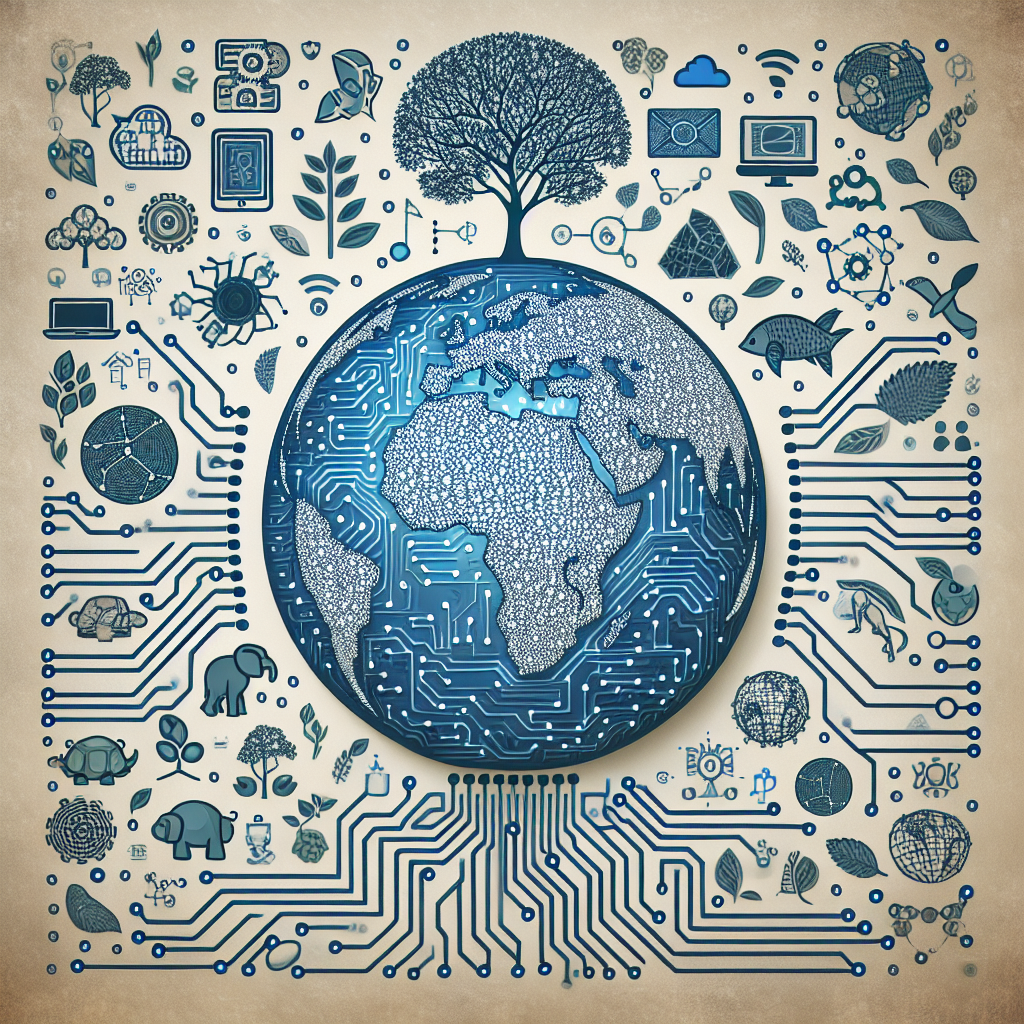Artificial Intelligence (AI) and Machine Learning (ML) have become powerful tools in various fields, including environmental conservation. These technologies are being used to monitor, analyze, and address environmental issues, helping to protect ecosystems and wildlife, manage resources more efficiently, and mitigate the effects of climate change. In this article, we will explore some of the key applications of AI and ML in environmental conservation and discuss their potential impact on the future of our planet.
Applications of AI and Machine Learning in Environmental Conservation:
1. Wildlife Conservation:
AI and ML are being used to monitor and track wildlife populations, helping researchers to better understand animal behavior, migration patterns, and habitat preferences. For example, camera traps equipped with AI algorithms can automatically identify and count species, allowing conservationists to track endangered animals and assess population trends. ML algorithms can also analyze satellite imagery to detect illegal deforestation, poaching activities, and other threats to wildlife.
2. Habitat Restoration:
AI and ML technologies are being used to optimize habitat restoration efforts, such as reforestation and wetland restoration projects. By analyzing large datasets on soil composition, climate conditions, and plant species, ML algorithms can recommend the most suitable locations for planting trees or restoring natural habitats. This helps conservationists to prioritize their efforts and maximize the success of restoration projects.
3. Climate Change Mitigation:
AI and ML are playing a crucial role in monitoring and predicting the impacts of climate change on ecosystems and biodiversity. ML algorithms can analyze climate data to predict changes in temperature, rainfall patterns, and sea level rise, helping policymakers to develop strategies for adapting to these changes. AI-powered models can also optimize energy consumption, reduce carbon emissions, and promote sustainable practices in industries such as agriculture, transportation, and manufacturing.
4. Environmental Monitoring:
AI and ML technologies are being used to monitor air and water quality, track pollution sources, and assess the health of ecosystems. Sensors equipped with AI algorithms can detect pollutants in real-time, helping authorities to identify and address environmental threats more effectively. ML models can analyze satellite data to monitor deforestation, land degradation, and other environmental changes, providing valuable insights for conservation planning and decision-making.
5. Sustainable Resource Management:
AI and ML are helping to optimize the management of natural resources, such as water, soil, and fisheries. ML algorithms can analyze historical data on resource usage, environmental conditions, and socio-economic factors to predict future demands and develop sustainable management strategies. AI-powered tools can also support precision agriculture practices, water conservation efforts, and sustainable fisheries management, helping to ensure the long-term health and productivity of ecosystems.
Frequently Asked Questions (FAQs):
Q: How can AI and ML help to protect endangered species?
A: AI and ML technologies can be used to monitor and track endangered species, analyze habitat data, and detect threats such as poaching and habitat destruction. By providing real-time information on population trends and conservation needs, these technologies can help conservationists to develop targeted conservation strategies and protect endangered species more effectively.
Q: Can AI and ML help to address climate change?
A: Yes, AI and ML technologies are being used to monitor and predict the impacts of climate change, optimize energy consumption, reduce carbon emissions, and promote sustainable practices in various industries. By analyzing large datasets on climate patterns, greenhouse gas emissions, and environmental impacts, these technologies can help policymakers to develop effective strategies for mitigating climate change and promoting environmental sustainability.
Q: How can AI and ML improve environmental monitoring?
A: AI and ML technologies can analyze large volumes of data from sensors, satellites, and other sources to monitor air and water quality, track pollution sources, and assess the health of ecosystems. By providing real-time insights on environmental conditions and threats, these technologies can help authorities to respond quickly to pollution incidents, protect ecosystems, and ensure the well-being of wildlife and communities.
Q: What are some of the challenges in using AI and ML for environmental conservation?
A: Some of the challenges in using AI and ML for environmental conservation include the need for high-quality data, complex algorithms, and specialized expertise. Ensuring the accuracy and reliability of AI models, addressing bias and ethical concerns, and integrating these technologies into existing conservation practices can also be challenging. However, with proper training, collaboration, and investment, AI and ML have the potential to revolutionize environmental conservation and help us protect the planet for future generations.
In conclusion, AI and ML technologies are transforming the field of environmental conservation by providing innovative solutions to complex challenges. By harnessing the power of data, algorithms, and automation, we can monitor, analyze, and address environmental issues more effectively, protect ecosystems and wildlife, and promote sustainable practices for a healthier planet. As these technologies continue to evolve and improve, their potential impact on the future of our planet is truly promising.

